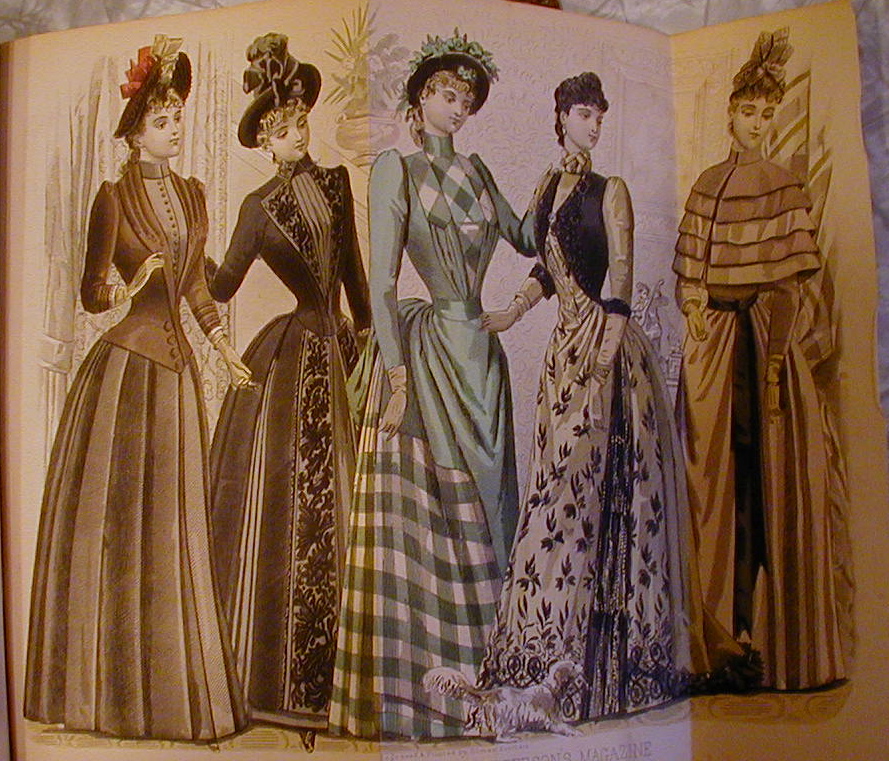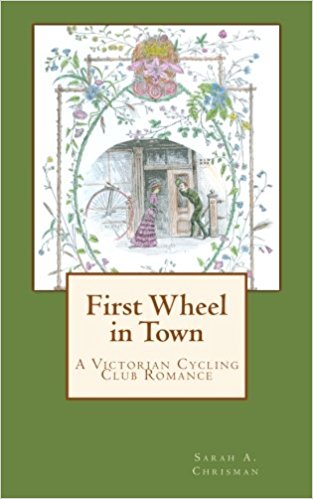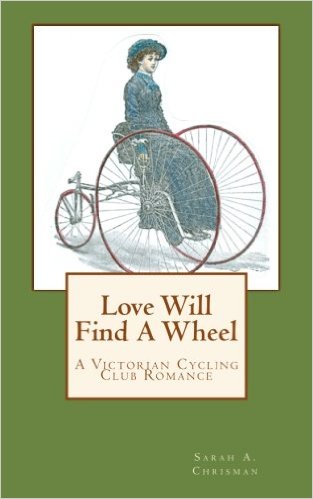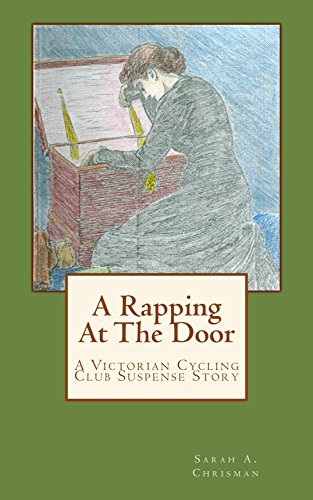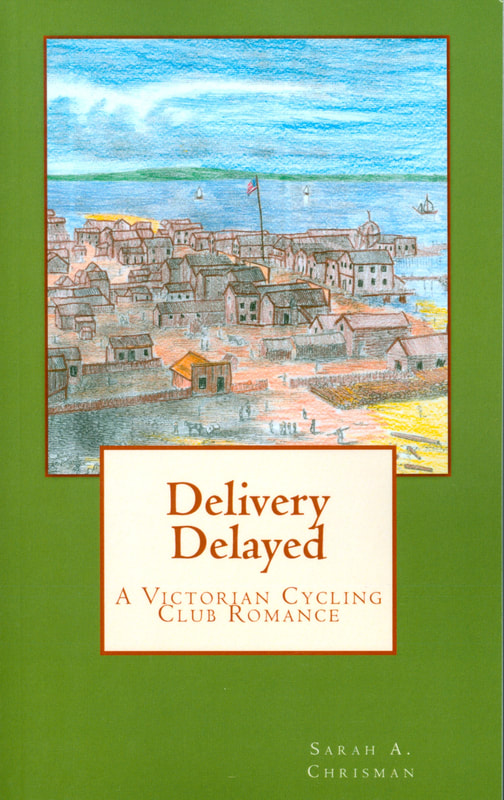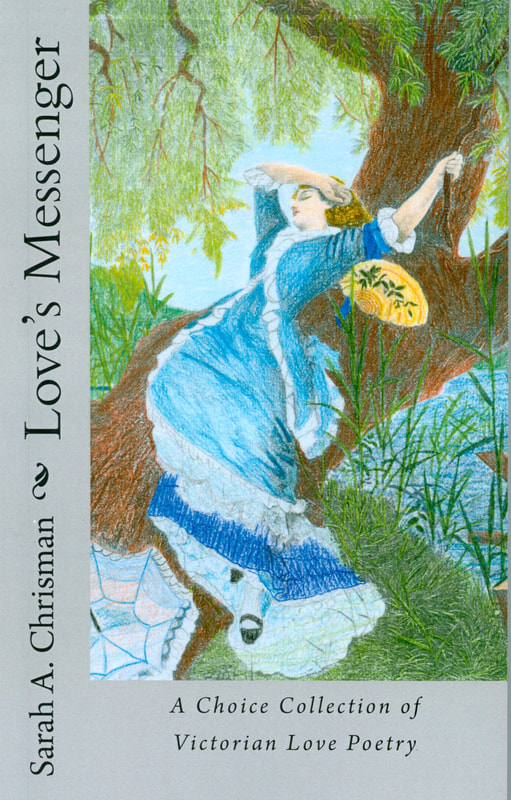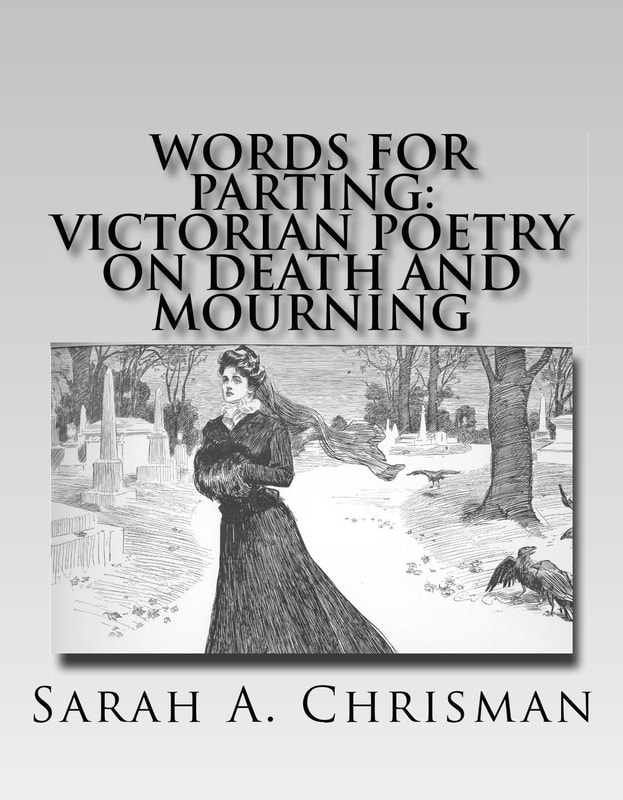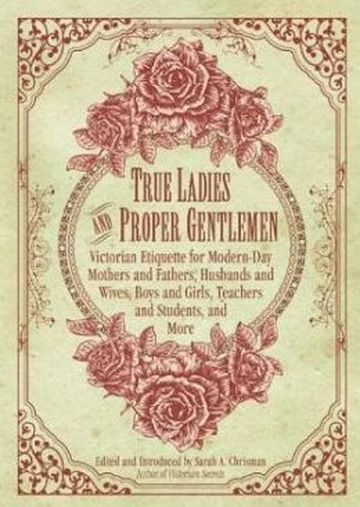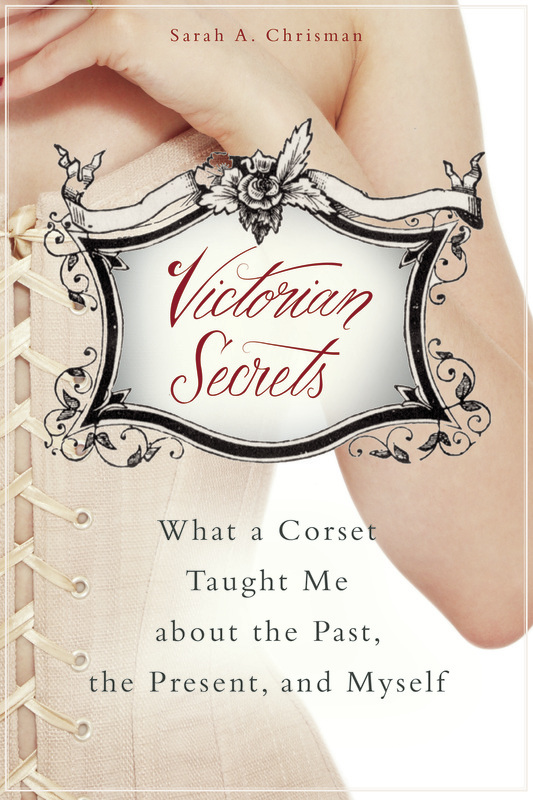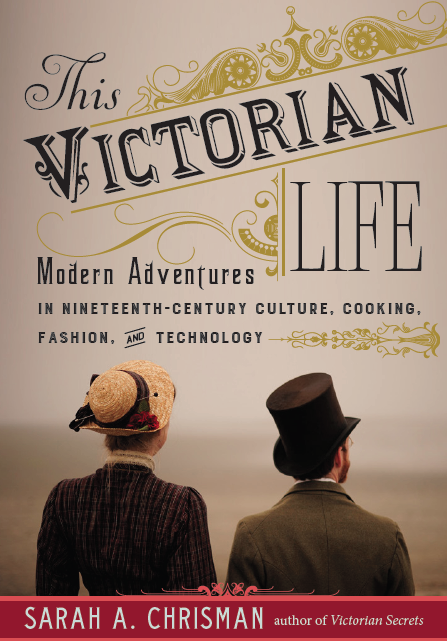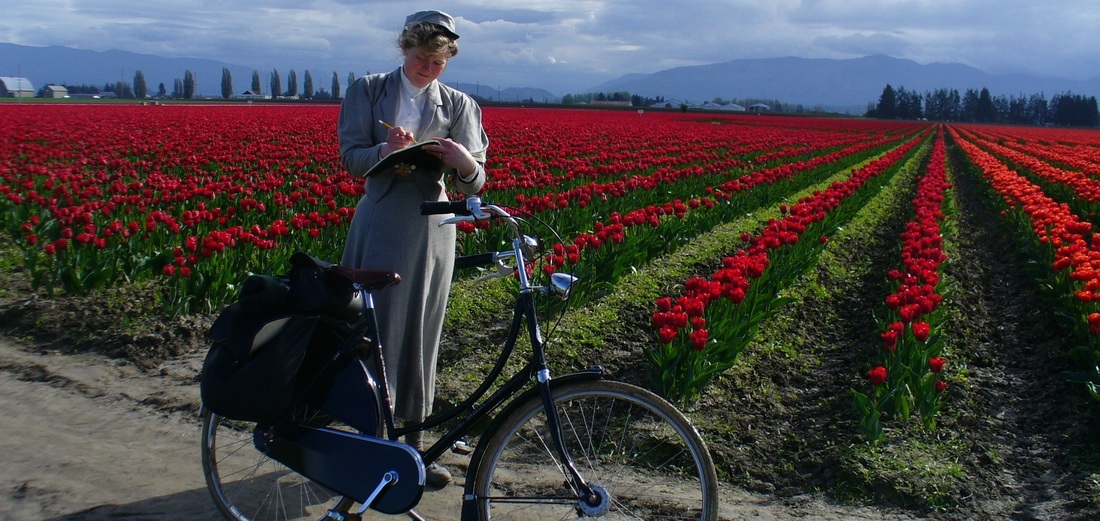Maintaining this website (which you are enjoying for free!) takes a lot of time and resources.
Please show your support for all our hard work by telling your friends about Sarah's books —and by buying them yourself, too, of course!
Historical Article
Woman Inventors
By T. Hart Anderson.
Godeys Magazine, 1897. pp. 55-58.
The absence of the word "male" from one important section of the Constitution, and the various statutes which have been enacted by Congress under its provisions, conferred many advantages and benefits to the people of this country. The Constitution provides that Congress shall make laws for the advancement of the useful arts and sciences, by securing the inventors and authors the exclusive right to their inventions or writings for a limited time. Under the provisions of the section of the Constitution referred to, Congress has passed from time to time various statutes which form the foundation of the American patent system. Nowhere in these statutes does it appear that the benefits are to be enjoyed by men alone; nor, in fact, are the benefits confined to the adult inventor, for many patents are issued to infants, in the legal sense, and there is an instance of a patent being issued to a child six years of age, who while at play with blocks and sticks, invented a toy rattle to amuse its juvenile mind.
It is of patents granted to women, however, that this article will treat, and in a limited space an attempt will be made to outline the field of invention illustrated by the many patents granted to women inventors.
Women were not slow in availing themselves of the rights and privileges conferred by the Constitution and laws of our country, and our patent system was but a few years old when the first woman inventor applied for and obtained a patent, giving her a monopoly in her invention for a certain specified time.
As you all know, a patent is in the nature of a contract between the United States on the one hand, and the inventor on the other, whereby the United States stipulates, in consideration of the inventor disclosing his invention in order that the people may obtain the benefits therefrom, that he is to have the exclusive right to make, use, and sell his invention throughout the United States and Territories, for a certain and limited period; and upon the expiration of the patent the invention is to become public property, to be freely used by everyone.
The first patent granted to a woman inventor in this country bore the date of May 5, 1809, and related to the art of weaving straw with silk or thread; and from that year to 1860 there were sixty patents for new and useful inventions.
From 1860 to 1870 there were three hundred and twelve patents issued to ingenious women, the cause of the increase in this decade doubtless being our civil war, which to a great extent stimulated the inventive faculties of our people. Many patents granted during the years 1860 to 1865 were for implements of war, clothing for soldiers, food products which were put in in compact form to be easily carried by the soldiers on the march, camp furniture, cots, implements, and medical dressings and devices used in the care of the sick and wounded soldiers on the field.
During the next ten years, from 1870 to 1880, the number of patents issued to women shows a large increase over the previous decade, the whole number in this period being nine hundred and thirteen, or nearly three times as many as were issued the preceding ten years.
The banner year of this decade was 1876, which has one hundred and twenty-four patents to its credit. The large issue in this year can doubtless be attributed to the Centennial Exposition, where thousands of women from all parts of the country had constantly before them, during their pilgrimages through the great Exposition buildings, hosts of exhibits of ingenious and intricate machinery and improved devices of all kinds—household articles, furniture, ingenious cooking utensils, and other things of wonderful manufacture, which naturally appealed to the keen perceptions of the ingenious feminine mind.
In the next decade, from 1880 to 1890, the large number of one thousand seven hundred and thirty-eight patents stands to the credit of the women inventors, while the present decade indicates that the ratio of increase will be maintained, there having been issued one thousand and ninety-eight patents to women inventors from 1890 to March 1, 1895, making in all a total of four thousand one hundred and twenty-one patents to the credit of ingenious woman from 1809 to 1895—a record of which all the sex should be proud.
Again, in the present decade, we see the effect of great expositions on the inventive faculties of the people. The World's Fair of Chicago in 1893 did much in the way of stimulating the inventive talents of our women, who in that year took out more than three hundred patents, a greater number than ever before.
The number in 1894 fell short of this, but the record for 1895 indicates that that issue will be not only equalled by surpassed.
These inventions are to a great extent in the line of household articles and wearing apparel, but not by any means confined thereto.
An inspection of the list of patents issued to women will show that their field of invention is as boundless as that of man. There is no art that lacks its representative feminine inventor.
The arts related to tanning, dyeing, engineering, and electricity, all have been invaded by the skillful cunning of the subtler sex.
As before referred to, the first patent issued to a woman related to the art of weaving. The next patents in order, related to improvements in corsets, carbonated liquids, stoves, hats, spinning wheels, shovels, bleaching straw, educational globes, cook-stoves, bellows, lavender balsam, and ice-cream freezers; while as early as 1845 we find a scientific woman inventing and patenting a submarine telescope and lamp.
Another ingenious woman, who doubtless had had much trouble in making the kitchen fire burn, devised and patented a composition for kindling fires which could be readily and easily ignited, whereby the trouble was entirely obviated.
Interspersed with patents for improvements in corsets, dresses, ruffles, etc., there may be seen patents for a reaping and sowing machine; for a vapor bath apparatus; for a war vessel and structure of defense; for reducing straw to make pulp, and various medical compounds for the cure of cholera and other ills, all invented and patented by women. Among other patents are the following, of a character that would seem beyond woman's sphere entirely; but which nevertheless were found to be of much value and were used to a great extent: an improved rail for street railways; a cooler to preserve cadavers before burial; an improved alloy of metal to resemble silver; an improvement in street lamps; and an electro-therapeutic appliance.
The patents granted to women for improvements in sewing-machines are legion, and many of them have proved to be of great value. Washing-machines have also received a good share of attention from the woman inventor, as witness the great number of patents issued for the same.
Many have been the attempts to devise a perfect dish-washing machine, and a large number of patents to women are for such devices.
Cradles and cribs, nursing-bottles, baby carriages, and children's clothing and toys are represented by hundreds of patents issued to fair inventors.
Speaking of toys calls to mind a patent for a paper doll, which was issued to a young girl scarcely in her teens, who has for several years received from a large manufacturer $1,200 a year for the privilege of making and selling the patented doll.
Many patents have been issued to women for bustles and panniers, when such devices were in style; and pads, shields, and forms, as well as false-hair constructions, are represented by a large number of patents. On the other hand, we find a woman devising and patenting a machine for deadening the noise caused by the running of trains on the elevated roads, for which she was handsomely paid.
Another ingenious woman with a mechanical turn of mind invented a machine of a wonderful, complex construction for making paper bags, and obtained for herself both fame and fortune. The machine was entirely automatic in operation; paper was fed to it in a strip from a roll at one end, and was cut into proper lengths, folded into tubular shape, and pasted and formed into perfect paper bags, which were discharged from the machine at the other end.
This machine revolutionized the manufacture of paper bags and largely reduced their cost. Bags hertofore made by laborious hand processes were turned out by the thousands daily by this machine, much more perfect and uniform than could possibly have been produced by hand.
This same woman has other patents for ingenious and complicated machines for cutting out parts of garments, whereby a great number of the same part of a garment may be cut out at one operation; and also machines of wonderful construction which are used in cutting out rubber shoe soles, having surmounted the many difficulties which had theretofore attended the cutting of rubber stock.
Of recent patents granted to women may be noted many for improved forms of hooks and eyes, and dress clasps, and fastenings of every description; also systems of patterns and measurements for cutting out and fitting dresses. New dresses worn by actresses on the stage while doing the dizzy whirl of the skirt dance... bicycle leggings and gaiters, have all been the subject-matter of patents granted to women.
A Brookly woman has invented and patented a waterproof garment known as "The Duck's Back," and a skirt of the pantaloons variety, which is alleged to be... worn by women whose occupations and habits cause them to lead active lives.
Women have also invented and patented various devices and improvements on agricultural implements; baby carriage; barrel attachments and bicycle attachments, one of the latter being a pneumatic tire.
Speaking of pneumatic tires, people are going crazy, as it were, about pneumatics. Everyone seems to have an idea that it is patentable broadly, to remove the stuffing which has been commonly used in various parts of harness, in bedding, and in other things of a similar character, and to replace the same with compressed air. This is not true, however, for the only thing that can be patented in such cases is the special construction of the device.
Building appurtenances, such as window frames and sashes, ceiling supporters, and various fire-escapes, have received much attention from women.
The classified list shows that most patents to women relate to culinary utensils, furniture, and wearing apparel, many hundreds being issued in these classes yearly.
Educational appliances, heating and ventilation apparatus, medical appliances, motors, plumbing, printing, and binding, railway appliances, theatrical apparatus, toilet articles, toys and games, and trunks and bags, are some of the things that have been improved by the ingenious woman inventor.
A woman who was doubtless much troubled by "hubby" coming home late at night and with his "night key" temporarily mislaid, invented and patented a device for lowering a key from a window to save herself the trip down the dark hall and stairs to open the door.
The patents for designs must not be forgotten, as they form a very inviting field for the exercise of the artistic and inventive talents of women.
In this branch there are thousands of patents issued yearly, and many of them to women for new and useful designs.
Many women of artistic taste make a great deal of money creating new and pretty designs for wall-papers, carpets and rugs. You have all, no doubt, admired the beautiful designs for wall-papers, carpets, and rugs. You have all, no doubt, admired the beautiful designs in cut glassware, dishes, and china which are displayed in the shop-windows; also the novel and beautiful silver toilet accessories, such as brushes and mirrors, and the thousand and one articles of the silversmith's art; but not many of you realized that almost every one of them has been patented, in order to protect the manufacturers of the same, and to prevent others copying them.
Almost everything of this nature, however, is patented; all of Haviland's beautiful china, and the fine silverware of Tiffany, are protected by patents issued by their designers, the particular shape, configuration or ornamentation being the subject-matter of each patent; and many of the beautiful designs are the creations of the artistic tastes of women.
Many of the souvenir-spoon designs are patented to women, and there is one woman in New York City who is engaged in designing wall-papers for a large manufacturer of such goods, and who yearly takes out many patents for her graceful work.
This branch of the patent business ought to, and does, constitute a large and inviting field for the employment of women.
Many beautiful designs for various articles could be created, by bright women of artistic tastes, in a few hours' work each day; and that such creations would be valuable, and would find a ready market, is attested by the fact that a number of women are earning handsome annual returns in such employment.
Other inventions which yield handsome returns, and in the manufacture and sale of which some women have made fortunes, are patent medicines for various complaints, toilet washes, face bleaches, and powders.
Many face or toilet masks to be worn over the face at night, for the application thereto of salves and lotions for the purpose of improving the complexion, and apparatus for steaming the face, are patented by women, who make large sums of money from their use and sale.
From the foregoing it may be readily seen women have done much toward the development of the arts and sciences, the perfection of which is to-day regarded with wonder and admiration by everyone.
The above piece was written in 1897. To learn about how copyright issues were changed by corporations in the 20th century, see this 2016 article:
http://priceonomics.com/how-mickey-mouse-evades-the-public-domain/
(External link)
***
More historical women's interest pieces:
A Fortune Found In A Pickle Jar (Fiction—1889)
A Man in the Kitchen: The Difference Between A "Betty" And the Other Kind (1889)
An Old Maid's Paradise (1889)
A Woman Without Cares or Children (1889)
Individuality and Equality (1894)
Miss Ray Frank (1897)
The Right Sort of Girl (Poem—1889)
Woman's Cycle (1897)
Woman's Exchanges as Training Schools and Markets for Work (1894)
Woman's Work for Woman (1889)
***
Back to Historical Articles Index
In a seaport town in the late 19th-century Pacific Northwest, a group of friends find themselves drawn together —by chance, by love, and by the marvelous changes their world is undergoing. In the process, they learn that the family we choose can be just as important as the ones we're born into. Join their adventures in
The Tales of Chetzemoka
***
Anthologies
True Ladies
and Proper Gentlemen
***
Non-fiction
For words of wit and advice sage,
I hope you'll like my author page!
History lessons, folks who dare,
Please do share it while you're there!
https://www.youtube.com/@Victorianlady
Thank you!
***
If you enjoy our website and appreciate what we do,
please consider making a cash donation.
Everything helps, and is appreciated!
If you enjoy our website and appreciate what we do,
please consider making a cash donation.
Everything helps, and is appreciated!
Search this website:
***
